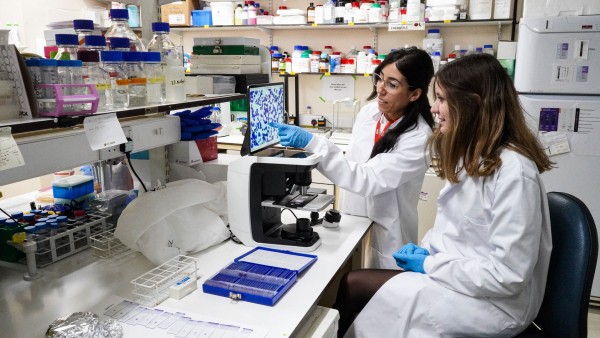1 March 2023
As rates increase, Dr Mortitz Herle of the IoPPN updates on how theories are supporting a London taskforce.
Childhood obesity is a growing problem in many parts of the world. In London, by 2018, 20% of 4/5-year-olds were found to have overweight or obesity, rising to 38% by the age of 11.
Tracking these numbers across time has shown that in some neighbourhoods are worse affected than others, e.g. since 2006/2007 Camberwell Green as has seen an increase of 10%. Overall, a disproportionate amount of the burden from obesity is concentrated in poor areas, exacerbating already existing health inequalities.
To tackle this issue the London’s Child Obesity Taskforce, with support of the Guy’s and St Thomas’ Charity, have pledged to halve the percentage of children with overweight and obesity by 2030, providing all children the opportunity to eat healthily and be physically active. This strategy is essential, as childhood obesity can lead to a range of health problems, both in childhood and later in life, and children with higher weight often get bullied and face discrimination within the education and health systems.
From a research perspective, childhood obesity has been in focus over the past decades. Weight development in childhood is complex and influenced by multiple genetic, psychological and environmental factors.
One theory that aims to unify the different contribution is the Behavioural Susceptibility Theory first proposed by Jane Wardle and Clare Llewellyn in 2015. According to this theory, some children are more susceptible to gaining weight than others due to their behavioural responses to the environment around them. Specifically, the theory suggests that some children are more likely to overeat in response to environmental cues, such as the sight or smell of food, or social cues such as peer pressure, than others.
The theory further suggests that differences in these eating behaviours are partially influenced by genetic factors. For example, if a child has a genetic predisposition to obesity and is raised in an environment where high-calorie, low-nutrient foods are readily available and physical activity is not encouraged, they are more likely to gain weight than a child without a genetic predisposition who is raised in a more health-promoting environment.
This might be especially important for big cities like London, which has more than 8,000 fast-food outlets offering cheap and high energy dense foods. Typical fast-food meals contain a large proportion of daily calories, but often do not include any fruit or vegetables. Most fast-food takeaways are just walking distance from primary and secondary schools, which can only exacerbate problems around overeating and weight gain.
Here the framework of The Behavioural Susceptibility Theory is particularly useful, suggesting that some children are genetically predisposed to being more susceptible to environmental cues that trigger overeating. However, these genetic predispositions are not deterministic and can be modulated by the environment in which the child lives. In other words, the environment can either amplify or dampen the genetic predisposition.
The implications of the Behavioural Susceptibility Theory for childhood obesity prevention are significant. The theory suggests that interventions aimed at reducing childhood obesity need to target both the genetic and environmental factors that contribute to behavioural susceptibility. This may involve a range of interventions, such as changing the food environment to make healthy foods more readily available, reducing exposure to unhealthy foods, and promoting healthy eating behaviours. It may also involve working with parents and caregivers to help them understand the importance of creating healthy environments for their children and developing healthy eating habits and behaviours from an early age.
Dr Moritz Herle is a MRC Skills Development Research Fellow based at the Institute of Psychiatry, Psychology & Neuroscience (IoPPN).
Find out more about London's Child Obesity Taskforce.
Llewellyn C, Wardle J. Behavioral susceptibility to obesity: Gene-environment interplay in the development of weight. Physiol Behav. 2015 Dec 1;152(Pt B):494-501. doi: 10.1016/j.physbeh.2015.07.006.
King’s Health Partners Women and Children’s Health’s vision is to be a centre for excellence in women and children’s health. The Clinical Academic Partnership improves outcomes locally, nationally, and globally in childhood and on into adulthood, with an integrated mind and body approach, in the context of family and community.





